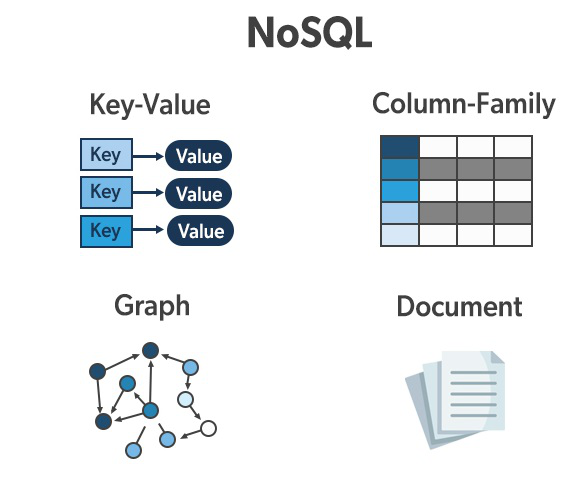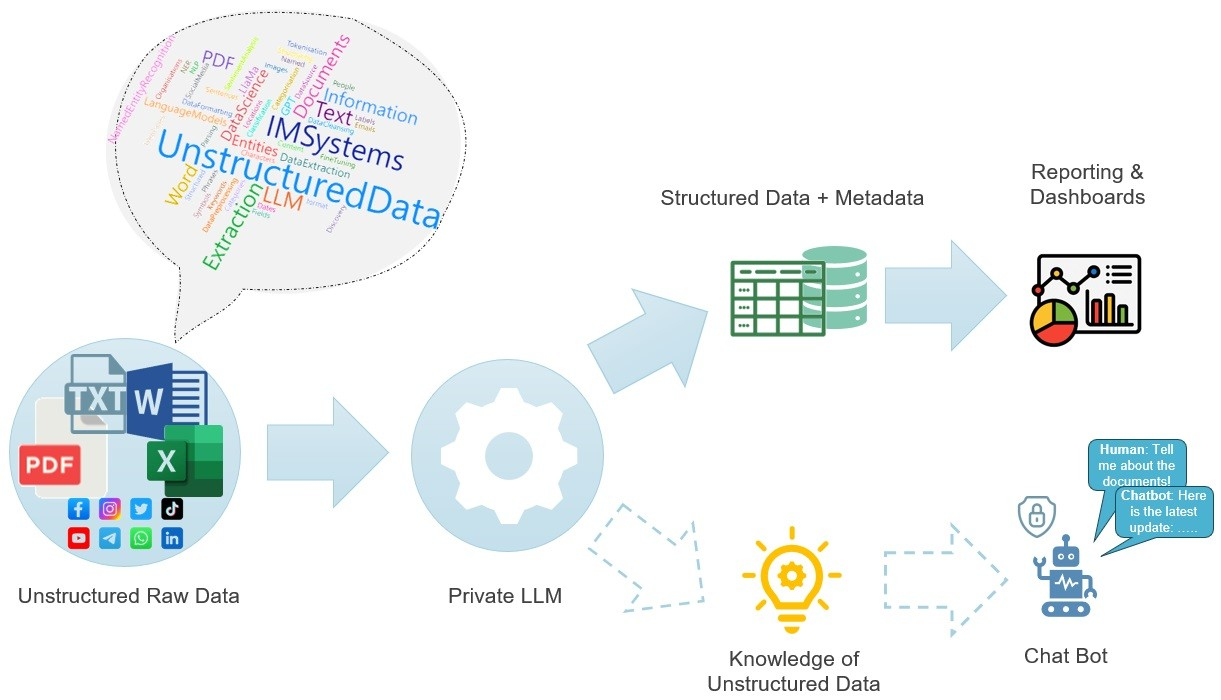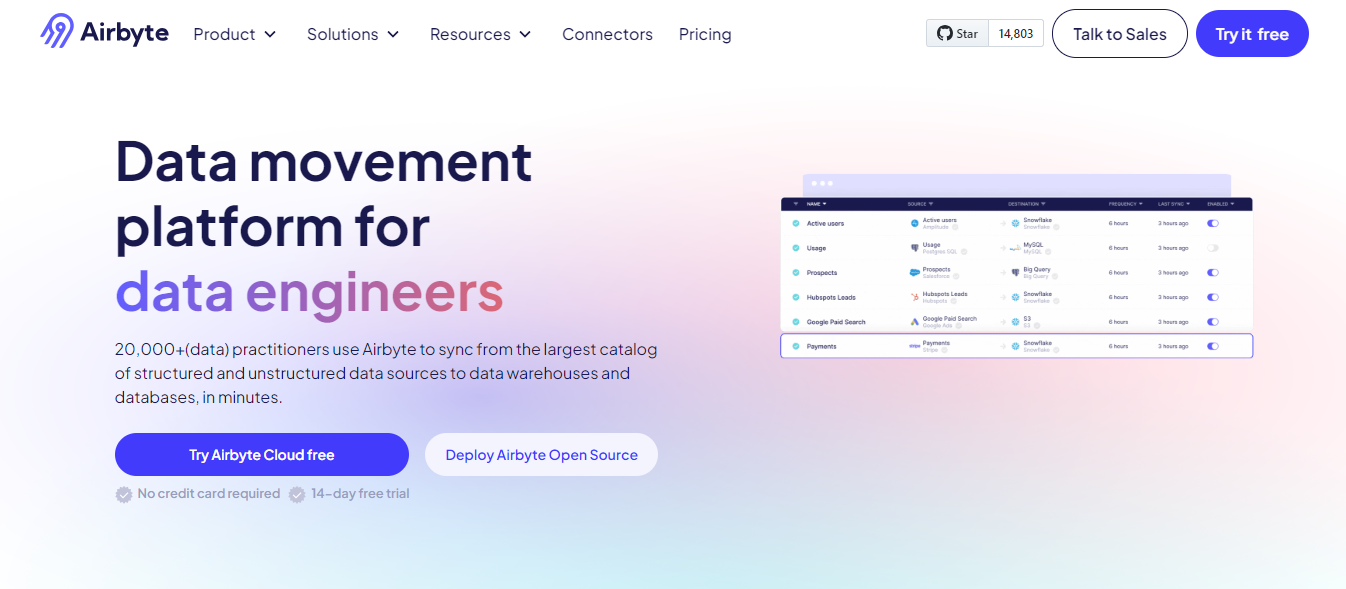What Is Unstructured Data: Uses & Examples
Summarize this article with:
✨ AI Generated Summary
Your organization generates massive amounts of data from social media posts, survey responses, documents, and countless other sources. Recent projections indicate that unstructured data will account for 80% of all data collected globally by 2025, with approximately 90% of all organizational data being unstructured and growing at an astounding rate of 55-65% annually. Despite this exponential growth, approximately 90% of unstructured data remains unanalyzed, creating what experts call "dark data" that holds untapped potential for business intelligence.
The emergence of generative AI has transformed unstructured data from a storage challenge into a strategic asset. Advanced AI and machine-learning tools can now reveal actionable patterns and correlations within text, images, audio, and video content that were previously invisible. These insights have the power to revolutionize decision-making processes and drive innovation across industries.
This comprehensive guide explores unstructured data fundamentals, processing methodologies, and practical applications that can transform your data strategy.
What Is Unstructured Data?
Unstructured data refers to information that does not follow a predefined data structure or schema. Unlike structured data that fits neatly into rows and columns, unstructured data exists in its native format without predetermined organization. Customer feedback, product catalogs, sensor readings, audio files, social media posts, and medical images all represent common forms of unstructured data.
The absence of a fixed schema makes unstructured data both challenging and valuable. While traditional databases struggle with this format, the rich contextual information contained within unstructured sources often provides deeper insights than structured data alone. Modern AI technologies have made it possible to extract meaningful patterns from this complexity, transforming previously unusable information into actionable intelligence.
What Are the Key Characteristics of Unstructured Data?
No Fixed Schema
Unstructured data does not adhere to a predefined schema, allowing you to store information without conforming to rigid column-and-row structures. This flexibility enables the capture of diverse data types that would be impossible to accommodate in traditional relational databases.
Variety in Data Format
Unstructured data encompasses numerous formats including text documents, images, videos, audio recordings, emails, social media content, and sensor outputs. This diversity makes it one of the most versatile data types for capturing real-world information in its natural state.
Rich Contextual Information
Unlike structured data that focuses on specific attributes, unstructured data contains detailed contextual information about its environment and circumstances. Images provide visual context about locations, activities, and emotions. Text documents capture nuanced language patterns and semantic relationships. This contextual richness enables more sophisticated analysis and deeper understanding of underlying patterns.
What Are Common Examples of Unstructured Data?

Text
Text represents written content that varies in length, language, and style. Common storage formats include plain-text files (.txt), Word documents (.docx), PDF files, presentations (.pptx), and spreadsheets (.xlsx). Text analysis proves invaluable for mining customer feedback, automated content generation, and sentiment analysis across multiple languages and formats.
Images
Images encompass photographs, graphics, satellite imagery, and medical scans that present visual information. Popular formats include JPEG, GIF, PNG, and TIFF. Computer-vision techniques can extract meaningful visual patterns for applications in medical diagnostics, autonomous-vehicle navigation, facial-recognition systems, and quality control in manufacturing.
Audio
Audio data captures information from speech, music, environmental sounds, and industrial machinery. Common formats include WAV, MP3, AAC, and FLAC. Audio analysis enables speech-to-text conversion, video-to-text processing, voice-assistant functionality, and audio-surveillance systems.
Email consists of electronic messages exchanged through web servers, containing sender and recipient information, subject lines, message bodies, and attachments. Email analysis supports customer-relationship management (CRM), marketing automation, fraud detection, and compliance monitoring across organizational communications.
Social Media Content
Social-media platforms generate diverse digital content including posts, comments, images, videos, and links shared across Facebook, X, LinkedIn, and other networks. This content provides valuable insights for marketing campaigns, customer-engagement strategies, brand monitoring, and public-opinion research.
What Are the Primary Uses of Unstructured Data?
Customer Insights and Behavior Analysis
Analyzing unstructured data from customer reviews, call transcripts, and product feedback reveals deep insights into customer preferences, pain points, and behavioral patterns. Natural-language-processing techniques can identify sentiment trends, feature requests, and satisfaction drivers that inform marketing strategies and product-development decisions.
Patient Record Analysis for Improved Diagnosis
Healthcare providers analyze unstructured data from medical reports, patient histories, and clinical notes to identify patterns indicating underlying conditions. This analysis enables personalized treatment plans, drug-discovery insights, and predictive health analytics that improve patient outcomes.
Chatbot and Virtual Assistant Training
Training conversational-AI systems requires analyzing large datasets of unstructured text, including conversation logs, customer queries, and domain-specific documentation. Well-trained models can understand context, handle ambiguous queries, and provide accurate responses across diverse interaction scenarios.
Product Recommendation Systems
Machine-learning algorithms analyze user reviews, browsing history, and social-media interactions to identify individual preferences and behavioral patterns. These insights enable personalized product recommendations that increase customer satisfaction and drive sales-conversion rates.
How Does Unstructured Data Compare to Other Data Types?
The following table distinguishes unstructured, structured, and semi-structured data according to specific properties:
What Are the Best Storage Solutions for Unstructured Data?
NoSQL Databases

MongoDB – document-oriented; stores data in binary JSON; supports horizontal scaling and real-time analytics.
Apache Cassandra – column-family NoSQL database with distributed architecture, high availability, and fault tolerance.
💡 Suggested read: Features of Graph Database in NoSQL
Data Lakes
Data lakes currently represent the largest technology segment in unstructured data solutions, accounting for 41.6% of total market share. Popular options include:
Amazon S3 – object storage with low-latency access and tight integration with AWS analytics.
Snowflake – cloud-native platform that separates storage from compute, handling structured, semi-structured, and unstructured data.
Data Warehouses
Amazon Redshift – petabyte-scale, integrates with data lakes for unified analytics.
Google BigQuery – serverless, supports machine-learning functions and geospatial analysis.
File Formats for Unstructured Data
- CSV – tabular but can contain free-form text.
- JSON – key-value format that handles mixed structured/unstructured content.
How Are Multimodal Learning Approaches Transforming Unstructured Data Processing?
Multimodal learning enables unified analysis of text, images, audio, and more within a single framework. Transformer-based architectures with cross-attention align different modalities in a common vector space, allowing systems to correlate, for example, medical images with clinical notes or product photos with customer reviews.
Vector databases such as Pinecone and Weaviate efficiently store and query the resulting multimodal embeddings, unlocking applications in retail recommendation, financial sentiment detection, and manufacturing quality control.
What Role Does Self-Supervised Learning Play in Automated Unstructured Data Processing?
Self-supervised learning generates labels from the data itself through pretext tasks—predicting masked words, reconstructing image patches, or distinguishing similar from dissimilar samples. This eliminates costly manual labeling and produces robust representations that can be fine-tuned with minimal annotated data.
Industries apply these methods for automated document classification, medical-literature mining, and compliance monitoring, dramatically reducing time-to-insight while maintaining accuracy.
How Can Large Language Models Help Make Sense of Unstructured Data?

Large Language Models (LLMs) such as GPT, BERT, and Claude can categorize, summarize, translate, and extract insights from vast text corpora, legal documents, customer feedback, and more. Integrated with vector databases via retrieval-augmented generation (RAG), they power enterprise search, knowledge management, and intelligent chatbots.
What Are the Main Challenges in Managing Unstructured Data?
- Volume & Scalability – nearly 50% of enterprises are currently storing more than 5 petabytes of unstructured data, while approximately 30% have exceeded 10 petabytes, straining storage and compute resources.
- Lack of Structure – requires advanced AI/ML for pattern extraction.
- Data Quality – poor data quality, largely attributed to unstructured data management challenges, costs the United States economy approximately $3.1 trillion annually.
- Storage & Retrieval Complexity – demands specialized solutions (NoSQL, data lakes).
- Variety & Heterogeneity – multiple formats need diverse processing techniques.
- Privacy & Security – global average cost of data breaches reached $4.88 million in 2024, with sensitive unstructured content mandating robust governance and compliance.
If you have data stored across multiple sources, you can integrate it efficiently using a comprehensive data-movement and replication platform like Airbyte.
Why Choose Airbyte for Unstructured Data Integration?

- Comprehensive Connector Ecosystem – over 600 pre-built connectors plus a Connector Development Kit for custom sources.
- AI-Ready Pipelines – native loading into vector databases, LangChain transformations, automated chunking, OpenAI embeddings.
- Enterprise-Grade Processing – distributed architecture, CDC, schema management, OCR, metadata extraction.
- Programmatic Access – PyAirbyte enables custom Python workflows.
Best Practices for Handling Unstructured Data
- Comprehensive Data Cleaning – normalize formats, remove duplicates, validate quality.
- Robust Data Governance – classification, lineage tracking, role-based access.
- Regulatory Compliance – automated PII detection, anonymization, auditing.
- Standardization – consistent naming, metadata schemas, reusable processing templates.
- Scalable Architectures – cloud-native, containerized, microservices, distributed compute.
- Monitoring & Optimization – track processing metrics, automate alerts, continuous tuning.
Summary
Unstructured data represents one of the greatest opportunities for competitive advantage. With the unstructured data management market projected to reach $156.27 billion by 2034 and cloud-based deployment capturing 62.3% of market share, organizations that implement the right storage solutions, AI-powered processing, and governance frameworks can transform dark data into actionable intelligence—fueling innovation, improving decision-making, and unlocking new business value.
FAQs
Is CSV unstructured data?
CSV is generally considered semi-structured. However, free-form text within cells can be classified as unstructured content.
What types of data are considered unstructured?
Text documents, images, videos, audio files, emails, social-media posts, server logs, sensor data—anything that doesn't fit neatly into relational tables.
How do you identify unstructured data?
By its lack of predefined format, incompatibility with traditional relational tables, and the need for specialized processing techniques beyond simple SQL queries.
What is the best database for unstructured data?
NoSQL solutions such as MongoDB, Cassandra, and Elasticsearch—choice depends on workload (document, column-family, search, graph).
Can AI handle unstructured data effectively?
Yes. Modern NLP, computer-vision, and multimodal AI techniques can analyze, categorize, and derive insights from unstructured content with high accuracy.

.webp)
